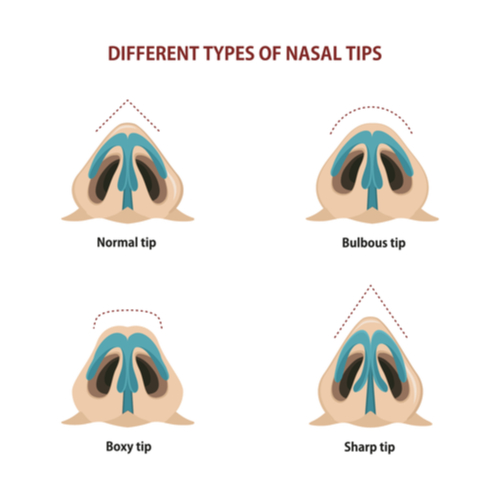
Tip Rhinoplasty, also known as tip plasty, is a surgical procedure aimed at addressing specific cosmetic concerns related to the nasal tip. It focuses on correcting issues such as a boxy nasal tip, droopy tip, round tip, round nose, or bulbous tip, which may affect the proportion and balance of the nose.
Dr Stephen Kleid and Dr Simon Braham are experienced ear, nose, and throat (ENT) surgeons, specializing in tip plasty and offering this procedure to patients seeking improvement in the appearance of their nasal tip. With a wealth of expertise in ENT surgery, they are highly regarded as two of the leading surgeons in tip plasty, both in Melbourne and across Australia.
Anatomy and Altering Nasal Tip Concerns
✓ Anatomy
The nasal tip, located at the outermost part of the nose, consists of cartilage covered by skin. Understanding the different components of the nasal tip is crucial in addressing specific deformities through tip plasty.
The key structures of the nasal tip include:
- Alae: The lateral sides of the nostrils.
- Columella: The central column that separates the two nostrils.
- Nasal septum: The partition that divides the nasal cavities.
✓ Nasal Tip Concerns

Tip plasty, also known as tip rhinoplasty, tipoplasty, nasal tip enhancement, or nasal tip correction, focuses on addressing specific issues with the nasal tip. It can be performed as a standalone procedure or in conjunction with other rhinoplasty techniques, depending on the individual’s goals.
The primary goal of tip plasty is to reshape the nasal tip. Our Surgeons at Melbourne-ENT utilize customized surgical techniques tailored to each patient’s unique anatomy and desired outcomes. The procedure may involve tissue removal, reshaping, alteration, or cartilage implantation to achieve the desired aesthetic changes.
Some common Nasal Tip issues and their corresponding treatments include:
- Droopy Nasal Tip
- When the nasal tip droops downward.
- A tip plasty procedure can elevate the nasal tip, providing a more aesthetically pleasing contour.
- Some refer to this as a “nose tip lift.”
- Overprojecting Nasal Tip:
- When the nasal tip protrudes excessively forward
- Nasal tip reduction is employed to bring the tip into better proportion with the rest of the face.
- Underprojecting Nasal Tip
- When the nasal tip lacks adequate projection, it can be addressed through a combination of nasal tip lift and augmentation techniques to achieve a more balanced appearance.
- Bulbous Nasal Tip
- A bulbous nasal tip appears round and disproportionately large compared to the rest of the nose.
- Nasal tip reduction, performed during tip plasty, is the preferred treatment for this condition.
- Boxy Nasal Tip
- In cases where the nasal tip appears wide and lacks a pointed shape, reducing and reshaping the tip can provide a more refined appearance.
- Pointy Nasal Tip
- If the nasal tip is overly sharp and narrow, surgical manipulation, combined with the use of a nasal tip graft, can widen and refine the tip.
- Small Nasal Tip
- Augmentation of a small nasal tip can be achieved by using cartilage grafts sourced from the ribs or ears.
- Narrow Nasal Tip
- Dr Kleid can enhance the curvature of a narrow nasal tip by strategically placing cartilage grafts during tipoplasty.
During a consultation, your surgeon will assess your nasal tip anatomy and discuss the most appropriate surgical techniques to address your specific concerns. The specific techniques employed during tip plasty will depend on individual factors and desired changes.
DOWNLOAD GUIDE
Considering Rhinoplasty surgery? Information is just one click away.

Potential Cosmetic Benefits of Tip Plasty Surgery
Tip Rhinoplasty offers several potential cosmetic benefits, including:
- Refining the shape
- Tip plasty can address a variety of aesthetic concerns related to the nasal tip, such as a boxy or bulbous shape, asymmetry, or a droopy appearance. The procedure aims to create a more defined and refined nasal tip that better suits the overall facial features.
- Correcting Asymmetry
- If the nasal tip is noticeably asymmetrical, tip plasty can help achieve better balance and symmetry by reshaping and repositioning the tip.
- Reducing nasal projection
- Some individuals may have a nasal tip that protrudes excessively, affecting the overall facial profile.
- Tip plasty can modify the projection of the nasal tip, creating a more proportionate and balanced appearance.
- Alter nasal proportions
- By addressing specific issues with the nasal tip, tip plasty can improve the overall proportions of the nose, creating better harmony with other facial features.
It’s important to consult with a qualified surgeon like Dr Stephen Kleid or Dr Simon Braham to discuss your specific goals and expectations for tip plasty. They can provide personalized recommendations based on your unique facial anatomy and desired outcome.
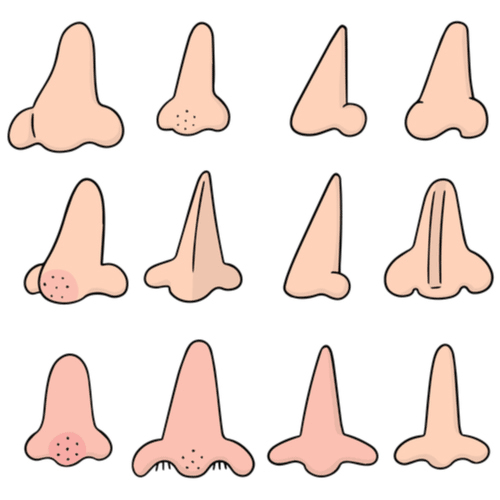
Who is a Candidate for Tip Plasty?
Nasal tip correction surgery may be an option for you if you;
- Are both mentally and physically healthy.
- Are over 18 years of age.
- Feel like your nose is taking focus from other parts of your face.
- Feel like your nose is not proportionate with the rest of your face.
- Feel like the tip of your nose is either too big, wide, narrow, or drooping.
- Are ready to take 1-2 weeks off work to recover.
Tip Plasty – The Surgery
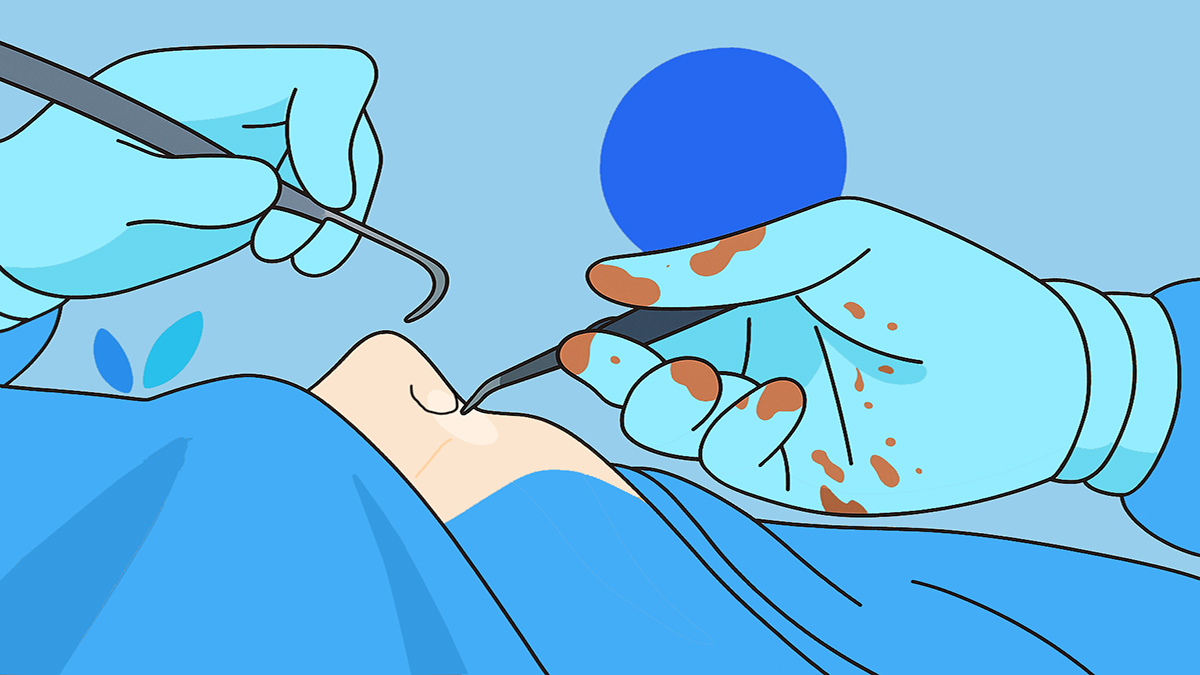
Tipoplasty procedures are usually performed under general anesthesia. Your surgeon will discuss Anesthesia with you before your procedure. General anesthesia provides a controlled and pain-free environment, allowing your surgeon to perform the tipoplasty with precision and expertise.
During the procedure, they will utilize one of two tipoplasty techniques to access the cartilage and underlying tissue of the nasal tip.
- Closed Technique – This technique involves making incisions inside the nostrils, with no visible external scarring. Through these internal incisions, your surgeon will manipulate the nasal tip cartilage.
- Open Technique – In the open technique, a small incision is made beneath the columnella, which is the fleshy area between the nostrils. This incision allows for direct visualization and precise manipulation of the nasal tip cartilage.
The choice between closed and open techniques is determined by the extent of the surgery, specific goals, and individual needs. Once the nasal tip cartilage is accessed, your surgeon may perform one or more of the following procedures;
- Cartilage Removal
- If needed, cartilage can be carefully removed to reshape the curvature of the nasal tip, reduce its size, or address bulbous or boxy tip appearance.
- Cartilage Implantation
- To enhance curvature, volume, or correct a pointy nose deformity, cartilage grafts sourced from either the ribs or ear can be implanted in the nasal tip.
- Cartilage Manipulation
- Existing nasal tip cartilage can be physically manipulated to sculpt it into a desired form.
- Alterations to Alar Cartilage, Columnella, and/or Nasal Septum
- Dr Kleid may make adjustments to these structures to control both the volume and shape of the nasal tip.
Through a combination of surgical techniques, your surgeon will alter your nose and reshape the nasal tip to achieve your desired outcome. Following the surgery, your nose may be packed with gauze to stabilize the wound.
Tip Rhinoplasty – Recovery After Surgery
Recovery after tip rhinoplasty is an important phase that allows your nose to heal and adjust to its new shape. Here are some key points to consider for tip rhinoplasty recovery:
Immediate post-operative period
After surgery, you will be monitored in a recovery area until you are ready to go home. Most patients are able to go home shortly after surgery (usually the same day) It is normal to experience some discomfort, swelling, and possibly mild bruising. Before you go home your surgeon will provide you with detailed instructions on how to care for your nose during the recovery period. This may include information on medication usage, wound care, and activity restrictions. It is crucial to follow these instructions carefully to optimize your healing process.
Swelling and bruising
Swelling and bruising are common after tip rhinoplasty. They will typically peak within the first few days and gradually subside over time. Applying cold compresses as recommended by your surgeon can help reduce swelling and manage any discomfort.
Rest and recovery
It is important to allow yourself adequate rest and recovery time following Tip rhinoplasty. Take time off from work to allow your body to heal. Avoid strenuous activities, heavy lifting, and exercise for a few weeks as recommended by your surgeon.
While full recovery after tipoplasty may take several weeks, many patients can return to work within 3-5 days, depending on the nature of their job and its physical demands.
Nasal care
Melbourne-ENT will provide specific instructions on how to care for your nose during the recovery period. This may include gently cleaning the incision area, avoiding nose blowing, and using saline nasal sprays or rinses to keep the nasal passages moisturized.
Follow-up appointments
Attend all scheduled follow-up appointments with Dr Kleid or Dr Braham to monitor your progress and address any concerns or questions you may have during the recovery process.
These appointments are crucial for ensuring proper healing and achieving the desired results.
Patience and realistic expectations
Keep in mind that the final results of tip rhinoplasty may not be immediately apparent. It can take several weeks or even months for the swelling to fully resolve and for your nose to settle into its new shape. Be patient and maintain realistic expectations throughout the recovery period.
If you have any specific concerns or questions about tip rhinoplasty recovery, it is important to consult with Dr Kleid or Dr Braham, as they can provide personalized guidance based on your individual circumstances.
Additional Tipoplasty Recovery Tips
- Protect your nose
- It is important to be mindful of protecting your nose during the recovery period.
- Avoid any activities that could cause trauma or injury to the nose, such as accidentally bumping or touching it.
- Be gentle when cleaning your face and avoid blowing your nose forcefully.
- Sleep with your head elevated
- Keeping your head elevated while sleeping can help reduce swelling and promote proper healing.
- You can achieve this by using extra pillows or by using a recliner chair.
- Maintain a healthy lifestyle
- Following a healthy lifestyle can help your recovery.
- Eat a nutritious diet, stay hydrated, and avoid smoking and alcohol, as they can impede the healing process.
Remember to consult with onr of our Melbourne-ENT surgeons regarding specific instructions and any concerns you may have about your tipoplasty recovery.
What is the cost of Tip Plasty in Melbourne?

The cost of tip plasty can vary depending on several factors, including the geographical location, the surgeon’s experience and expertise, the complexity of the procedure, the facility fees, anesthesia fees, and any additional treatments or services required. Therefore, it is difficult to provide an exact cost without evaluating your specific case.
It is best to consult with Dr Kleid or Dr Braham or their clinic to discuss the details of your desired tip plasty procedure and receive an accurate cost estimate. They will be able to provide you with a comprehensive breakdown of the expenses involved and any payment options that may be available.
Remember that choosing a qualified and experienced surgeon is crucial for achieving safe and satisfactory results. While cost is an important consideration, it should not be the sole determining factor. It is advisable to prioritize the expertise and reputation of the surgeon and the quality of care provided, as well as considering your budgetary constraints.
Tip Rhinoplasty – Frequently Asked Questions
How to lift the tip of your nose?
A nose lift, also called tip plasty or tip rhinoplasty, is the only way to fix a droopy nose.
The surgery manipulates the nasal tip and releases it from surrounding tissue, allowing your surgeon to lift your nose up at a higher angle.
How to fix bulbous nasal tip?
Tip plasty is a kind of rhinoplasty that deals specifically with nasal tip deformities.
If you have a large, bulbous, or boxy nasal tip, then tip reshaping surgery is the best way to deal with it.
Can you make your nasal tip larger?
Yes. Tip plasty can include nasal tip augmentation with the help of cartilage implantation. Cartilage can be taken from either a rib or ear and is implanted in your nasal tip to make it larger and more curved.
Can you make your nasal tip narrower?
Of course. During nasal tip refinement, Dr Kleid will remove cartilage and tissue from the sides and front of your tip to give it more “pointiness”.
Are there non-surgical ways to reshape the tip of your nose?
Yes, however, the results are usually less satisfying and less durable. Injectable fillers can be used to augment the nose and give it better curvature. Nevertheless, tip reshaping surgery remains the most effective way to fix the nasal tip.
Is tip plasty safe?
Rhinoplasty and tip plasty are generally safe procedures with minimal complications. Dr Kleid uses the most advanced and well-studied surgical and sterility techniques to ensure that all his patients get the best treatment possible. Most complications after nasal tip rotation are minor and can be dealt with.
Sources:
- Rhinoplasty – STAT PEARLS
Evidence-Based Medicine: Current Practices in Rhinoplasty
Tip shaping in primary rhinoplasty: an algorithmic approach
Nasal tip-plasty using various techniques in rhinoplasty
Tip-Oriented Closed Rhinoplasty Built on Septocolumellar Suture and a New Caudal Septal Graft Technique
Tip rhinoplasty. A modified delivery approach
Further Reading
- Read about Melbourne ENT’s Nose Surgery Melbourne
- Read about Melbourne ENT’s Rhinoplasty Melbourne – Nose Reshaping Surgery
- Read about Melbourne ENT’s Revision Rhinoplasty
- Read about Melbourne ENT’s Nostril Sill Reduction Melbourne
- View Melbourne ENT’s Before and After Photos
Why Choose Dr Kleid ?
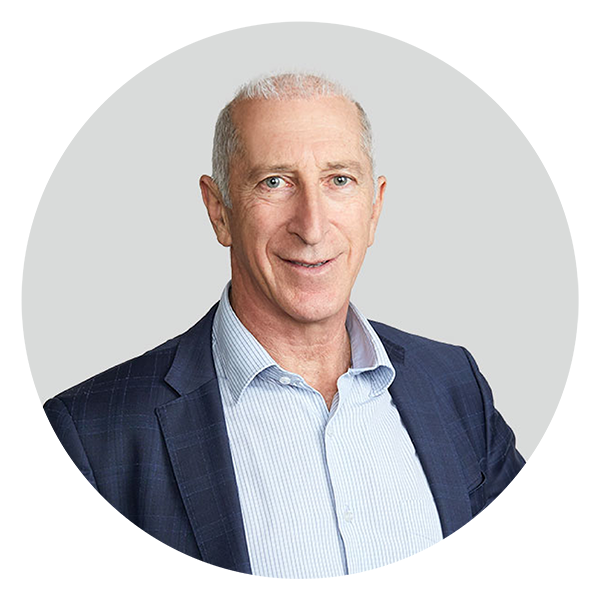
Dr Stephen Kleid,
Melbourne ENT Surgeon
MED0001052799
Dr Stephen Kleid is an experienced ENT Surgeon (Otolaryngologist) based in Melbourne with a passion for Septo-rhinoplasty, Septoplasty and a strong interest in Rhinoplasty Revision.
Qualifications
- AHPRA (Medical Board)
- MB, BS; FRACS (Fellow of the Royal Australasian College of Surgeons)
- AAFPS – Member of the Australasian Academy of Facial Plastic Surgery
- AAFPRS – (International Member of the American Academy of Facial Plastic and Reconstructive Surgeons)
Dr Kleid’s Procedures
Why Choose Dr Braham ?
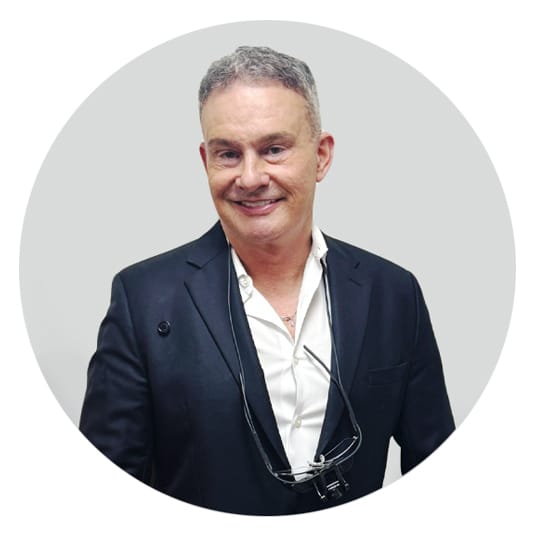
Dr Simon Braham,
Melbourne ENT Surgeon
MED0001144757
Dr Simon Braham MBBS (Hons) FRACS is an experienced Ear, Nose and Throat ENT Surgeon (Otolaryngologist) based in Melbourne, performing tonsil, grommet and sinus surgery for children & adults. He helps patients with breathing issues, snoring concerns and sleep disturbances.
Dr Braham’s Procedures
How can we help?
The Melbourne ENT Team takes pleasure in assisting you with any questions when considering a plastic surgery procedure. Please call the St Kilda East clinic in Melbourne between 9am – 5 pm on Weekdays.
What Next?

Want more information about your Procedure?
- Please read our website and blogs to find out more about your procedure and concerns
- For more information about pricing and payment methods, please visit our page on Surgery Payment Options.
- Talk to our Patient Care Team from 9 am to 5 pm Monday to Friday

What to Bring to Your Consultation
- We encourage you to bring a friend or family member to accompany you, as they can provide an extra perspective and support throughout the process.
- It is important to take thorough notes and carefully review all the documents provided to you.

How to Book a Consultation
- A referral from your GP or Specialist is necessary to see a surgeon for a consultation.
- Dr Kleid’s Nose Surgery consultation fee is $600 which includes a nasendoscopy ($300).
- Please contact us to book your consultation.

